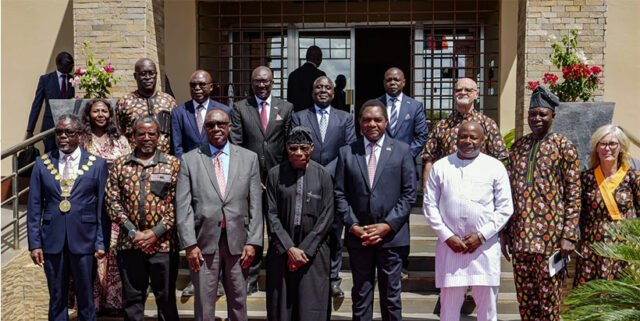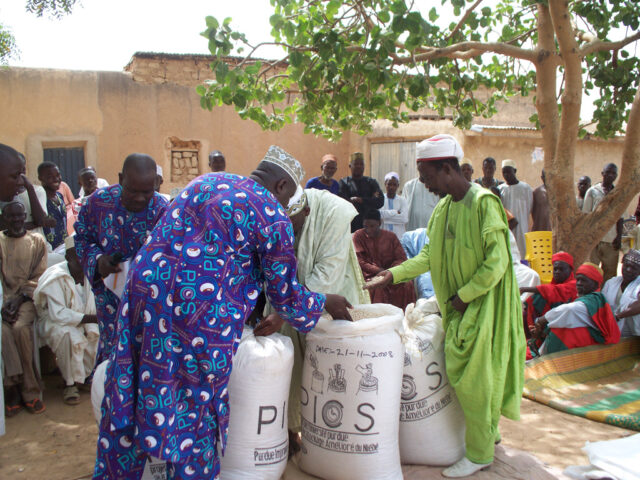
Scientists have demonstrated that such diseases as COVID-19, the new SARS-COV2 coronavirus, and Ebola can emerge due to ecosystem imbalances in forests.
Over the past few months, this hypothesis has flourished through coverage in the mainstream news media, shoring up the notion that COVID-19 is zoonotic — transmitted from a bat through another animal, possibly a pangolin or a dog, infecting humans in a market in China’s city of Wuhan.
Three of every four new or emerging infectious diseases originates in animals, according to the U.S. Centers for Disease Control and Prevention, which says that overall, animals have been the vector of more than 60 percent of infectious diseases.
Research into the relationship between viruses and forests by the Center for International Forestry Research (CIFOR) shows that such transmissions from animal to human and then from human to human can occur when forest ecosystems are depleted of natural biodiversity caused by human encroachments, widespread deforestation and landscape degradation.
As scientists have written since the outbreak of COVID-19, in forests, the removal and hunting of prey species, particularly large mammals, leads to an imbalance between pathogens and hosts resulting in viruses running amok.
In a blog on Landscape News, Robert Nasi, director general of the Center for International Forestry Research (CIFOR) and Tony Simons, director general of World Agroforestry (ICRAF), shared their views amid the fallout from the pandemic, detailing four steps they say are crucial to building the health of the planet:
Hindsight is wonderful, but foresight is better. We need to move beyond looking at crises in the rear-view mirror and instead predict and prepare for the risks posed by climate change, biodiversity loss, deforestation and land-use mismanagement. How can we learn from this pandemic to avoid future catastrophes, not only from pathogens but also from environmental, social and financial emergencies and the threats they pose to planetary health?
Our vulnerability and ingenuity are a forewarning: we can see what our future looks like with climate change, degraded landscapes and damaged ecosystems. We need to act decisively to tackle these problems. Nature, through the COVID-19 crisis, has reminded us of the connections between human health, resilient landscapes, economic stability and livelihoods, allowing us to see in real time the results of inaction. We fail to act at our peril.
At CIFOR-ICRAF, we helped pioneer the idea that land health underpins both human and environmental health. Landscapes, from which we derive our food, fiber, water and wood, are key. Mismanaged landscapes are often the source of the viruses that have threatened humans, including COVID-19, Ebola, HIV-AIDS and Zika, to name just a few. Failing to maintain land health will eventually create the same kind of emergency we are fighting with COVID-19 and its impact on health and livelihoods. As we look beyond the current crisis from a much wider and longer-term perspective, addressing the following four steps is crucial to rebuilding planetary health.
1. Change the way we produce food
The world cannot be fed unless the soil is fed. Regenerative agriculture enhances and sustains the health of the soil, which in turn improves productivity. This is the opposite of conventional fossil fuel-based agriculture. Conventionally farmed land around the world has lost about half of its carbon through plowing and leaving land bare between crops. By increasing soil carbon through regenerative agriculture, some studies suggest annual carbon output could be offset by 3 billion tons, almost as much as the European Union’s annual greenhouse gas emissions. Producing food using agro-ecology, agroforestry and natural farming approaches would go a long way in restoring land and protecting livelihoods.
2. Restore the forests and lands that support our agriculture
Degraded land costs the world $6 trillion annually in lost services, goods and livelihoods. Land restoration, in part through initiatives like the Bonn Challenge, must become an economically viable enterprise that creates jobs and produces goods while restoring the land’s productive capacity. We need to step away from the idea that ecosystems must be restored back to their “original” pristine condition. This is not possible in most cases. And tree-planting is not enough; it is even the wrong approach in some cases (planting trees in grassland is a mistake from a biodiversity perspective). Assisted natural regeneration should be our first choice for biodiversity. Global forest restoration could help sequester more than 200 gigatons of carbon, create productive buffers to protected areas, and produce goods and services.
3. Make our supply chains sustainable
Existing supply chains and trade are a source of deforestation and land degradation, greenhouse gas emissions and health risks. This does not need to be the case. Independent monitoring of corporate pledges on deforestation commitments, removing incentives for unsustainable behavior, paying a fair price to producers and enforcing strict trade measures will go a long way in showing that money can be earned while doing good. With 80 percent of food in Africa and Asia produced by smallholder farmers, there is considerable opportunity to rebuild sustainability from the ground up. A supply chain cannot be sustainable if at any point it’s not financially, environmentally or socially sustainable.
4. Value natural capital correctly (we can’t eat money)
Natural capital is the water, soil, viable land, food, air and energy we rely on to support life. By some estimates, the monetary value of these natural services is even larger than global gross domestic product. Sadly, we have failed to give natural capital a value on balance sheets and in markets. Without putting a price on natural capital, there is no incentive to conserve or improve it. The consequences are well documented: production of commodities from cocoa to palm oil that fails to account for the cost of deforestation, carbon emissions, damage to local livelihoods and biodiversity loss, and food systems that are incentivized by land-use mismanagement. Instead, the world needs new approaches to food production and landscape management that build resilience and balance. This will result in better diets, protected pollinators, less agrochemical application on soil, more efficient water use, low tillage and cover crops, more agroforestry, and a shift away from monoculture to agro-ecological diversity.
The post Terrain through the lens of the COVID-19 pandemic: Footprint for a healthy planet appeared first on CIFOR Forests News.
See the rest of the story at forestsnews.org
Related:



